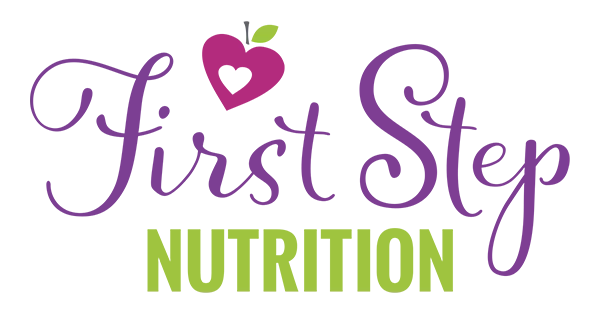A Dietitian’s Tips for Avoiding Arsenic & Lead in Food for your Family
Is arsenic in rice a concern when feeding your baby? What about older kids and adults; should you worry about the amount of rice you eat?
Generally, I don’t like to fearmonger or make you think our food is “toxic”, but I wanted to dig into this a little further today since it’s such a common question.
Read on to learn more about arsenic in food, the health effects of arsenic and how to avoid it.
What is Arsenic?
Arsenic is an element naturally found in the air, water and soil. The natural arsenic in animals and plants is called organic arsenic and we’re not worried about that.
The inorganic form of arsenic, however, is a concern. It’s also found in soil or water. But levels of inorganic arsenic have been increasing because of pollution due to industrial manufacturing.
Arsenic is listed as one of the World Health Organization’s 10 chemicals of major public health concern. This is a major concern in areas such as Bangladesh where the drinking water is contaminated and thousands have died.
In terms of inorganic arsenic content in the food we eat, rice is the largest source. Rice grains absorb 10-20x the amount of arsenic that other crops do. And rice is found in so many processed products: rice milk, rice crackers, rice cakes, many processed food products and infant rice cereal.
Many natural energy or sports bars also contain brown rice syrup as a sweetener. And gluten-free products often substitute wheat flour for rice flour, leaving a higher arsenic content in the comparable food.
And unfortunately, rice that is farmed on organic farms contains comparable amounts of inorganic arsenic to non-organic rice. This goes to show that gluten-free or organic foods are not always healthier and are sometimes less healthy than regular options.
What are the health risks of exposure to arsenic in rice and the diet?
Most of us know that arsenic in high doses causes death. But long-term dietary exposure to smaller amounts is linked to diabetes, cardiovascular disease and different types of cancer. It’s called chronic arsenic poisoning.
In children, arsenic exposure has been linked to decreased memory and intelligence. Recent studies also suggest that arsenic exposure in utero may have effects on the baby’s immune system.
Legal Limits on Arsenic
The Food & Drug Administration (FDA) in the United States tested 1,300 rice samples and rice products. Average levels of inorganic arsenic ranged from 1 part per billion (ppb) in infant formula up to 160 ppb in brown rice.
Based on its testing, the FDA proposed maximum levels in 2016, of 100 ppb for inorganic arsenic. But only in infant rice cereal. Of the infant cereals the FDA tested, half were over the limit. Generally by a small amount….but still.
The reason they chose to put limits on infant cereal and not other rice-based products is that: “Relative to body weight, rice intake for infants, primarily through infant rice cereal, is about three times greater than for adults. Moreover……people consume the most rice (relative to their weight) at approximately 8 months of age.”
The FDA has not set a limit on the safe amounts of arsenic in other rice products or the amounts of rice that adults should eat. Instead, they recommend adults “Eat a well-balanced diet for good nutrition and to minimize potential adverse consequences from consuming an excess of any one food.”
Tips to Decrease Intake of Arsenic in rice
So now we know why it’s best to avoid arsenic. The good news is there are a few things you can do to decrease your arsenic exposure and potentially harmful effects if you choose to eat rice. Which I do; it can still be part of a healthy, varied diet.
- Rinse your dry rice in a colander under fresh water before cooking.
- Soak the raw rice overnight in 6 cups of water per 1 cup of rice. This can decrease the levels of arsenic in rice by 80%.
- Cook rice in 6-10 cups of water per 1 cup of rice decreases the amount of arsenic by 40-60%. Drain the extra water when your rice is done. Just like how you would cook pasta on the stovetop!
- Buy rice grown in certain areas. The FDA discourages making country-to-country or state-by-state comparisons, as arsenic levels vary due to fertilizer, soil, season, and water use. But, from their testing, they found that rice varieties grown in California (particularly Basmati rice) had the lowest level of arsenic contamination. Rice from Texas was high. Consumer Report did their own analysis of arsenic in rice. They suggest choosing rice from Himalayan regions, such as North India, North Pakistan and Nepal.
- Eat some white rice. Brown rice contains 80% more arsenic than white rice. Arsenic accumulates in the grain’s outer layers, which are removed to make white rice. Brown rice has more nutrients and fibre, though, so you don’t have to switch entirely to white rice. If you’re able to rinse, soak and/or boil your brown rice, much of the arsenic will be removed anyways.
Takeaway: Arsenic in food
- For your baby: if you use infant cereal, skip the rice cereal. Use other options like wheat, mixed grain or oats. Or at least vary the grains, so you’re not feeding your baby only rice cereal. Avoid offering rice-based baby foods (i.e. baby rice crackers) multiple times per week.
- For toddlers or children: avoid offering multiple rice products per day.
- For adults: I know it’s boring but moderation and variety is the key to health! Choose a variety of grains. Avoid a gluten-free diet unless medically required. Avoid eating brown rice syrup on a regular basis (check your bars and shakes). And cook your rice using the methods mentioned above.
Lead in Babyfood
First arsenic in infant cereal and now lead in baby food?! As a parent, you want your baby to be able to grow and develop to their potential – and a good start with food is one step in supporting this. Lead-free food, that is! There’s no safe detectable level of lead in our blood. Even low levels of lead in humans have been linked to lower IQs and behavioural problems.
Where do we find lead in our food?
A report from an independent organization called the Environmental Defense Fund analyzed 11 years of Food & Drug Administration data in the United States and found that food was a source of lead contamination. 14% of all 1o,064 foods analyzed contained lead. Even more concerning is that a higher proportion of baby food (20% of the 2,164 baby food samples analyzed) also contained lead. This is a problem because babies are smaller and developing quickly, so at a higher risk of being damaged by lead exposure than adults.
Lead was found most often in fruit juices, especially grape juice (89% of samples contained lead), mixed fruit juices (67%), apple juice (55%) and pear juice (45%). The “baby” version of apple juice and grape juice had more samples that contained lead than the regular “adult” versions! Root vegetables like sweet potatoes (86%) and carrots (43%) were also commonly found to contain lead. As were baby teething biscuits (47%) and arrowroot cookies (64%).
Why is lead found in our food?
Why was lead found in the baby food? It could be from the soil and water that the fruits, veggies and grains were grown with. The baby food could also be contaminated with lead from the processing equipment or old lead paint in manufacturing facilities.
It’s important to note that all samples had levels lower than the current (decade-old) FDA allowable limits. But this doesn’t mean the lead contamination is not a problem. Why is there an allowable limit of something we know can be toxic -especially in kids! The Environmental Defense Fund recommends that the FDA review these limits. Good idea!
Tips to try and avoid lead in your baby food:
- Avoid juice for your kids. Juice was most likely to contain lead. Not only that, but all juices are high in sugar, low in fibre and not a nutrient-dense choice for your baby anyways. The new American Academy of Pediatrics guidelines recommend juice not be given at all to babies under a year old.
- Avoid store-bought teething biscuits and cookies. Again, not only are they nutrient-poor foods, they also tested commonly contaminated with lead.
- If you purchase baby food, ask your favourite company if they have tested for lead.
- Make your own baby food or use baby led weaning. Produce you buy in the store still may contain small amounts of lead . If you grow your own produce, you could look into the testing the level of lead in your garden soil, or ask the farmer at the market if their soil has been tested. But at least with making your own food, you’re by-passing the other potential contamination points during the manufacturing of store-bought baby food.
And want to learn more about Babyled Weaning? Watch my free webinar “How to get started with BLW” here.
Founder of First Step Nutrition | Registered Dietitian Nutritionist
Jen believes raising happy, well-nourished eaters who have a healthy relationship with food doesn't have to be a battle! She is an author and speaker with 18 years of experience specializing in family nutrition and helps parents teach their kids to try new foods without yelling, tricking, or bribing.







Sorry, the comment form is closed at this time.